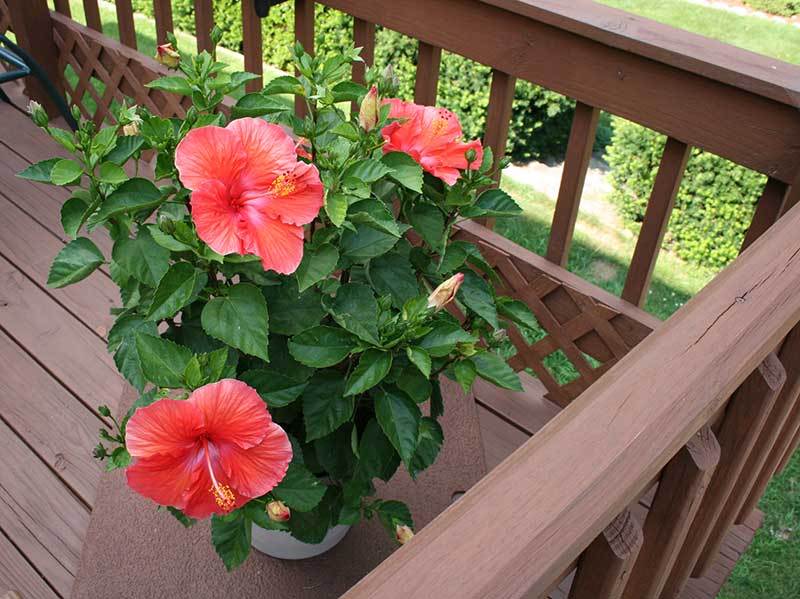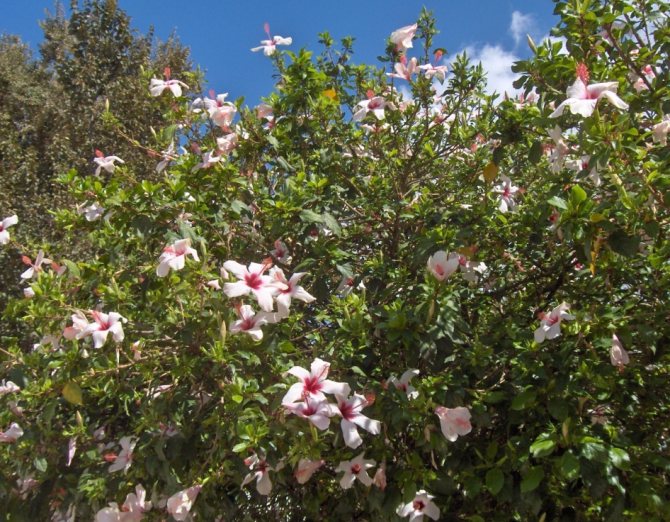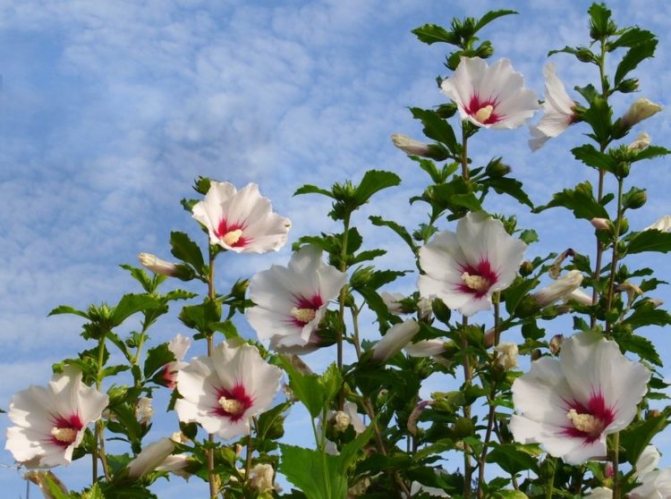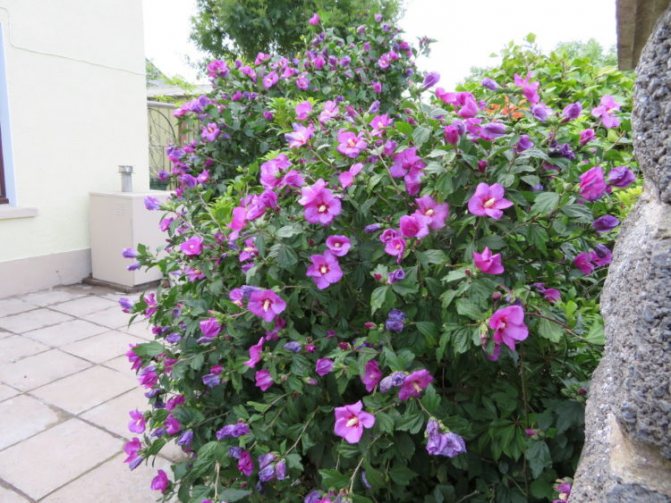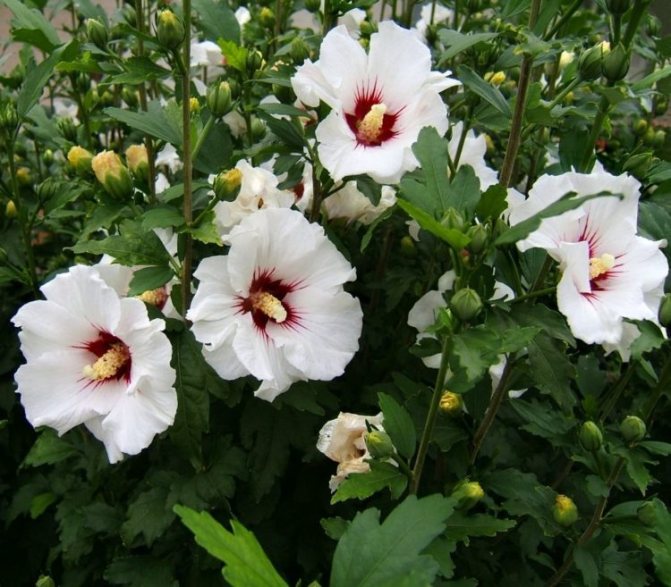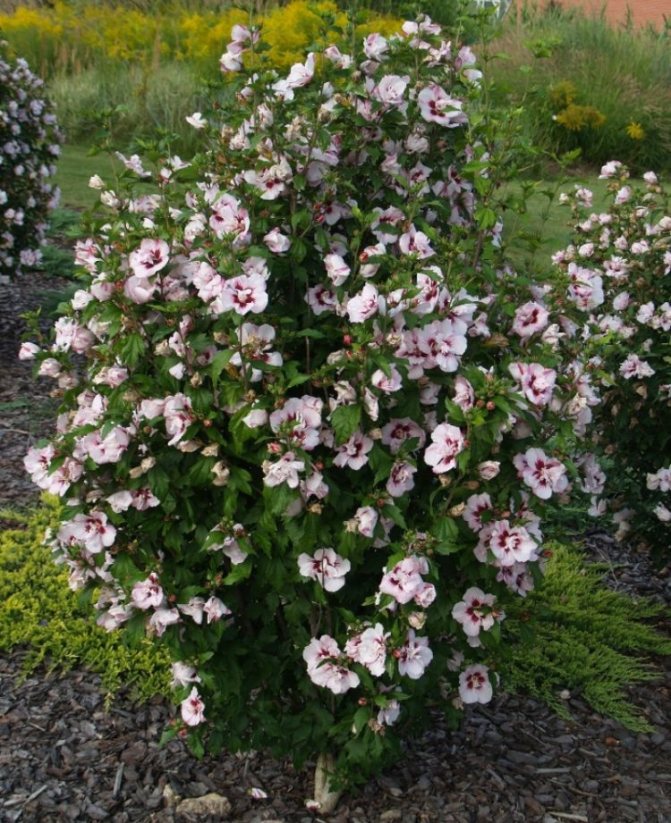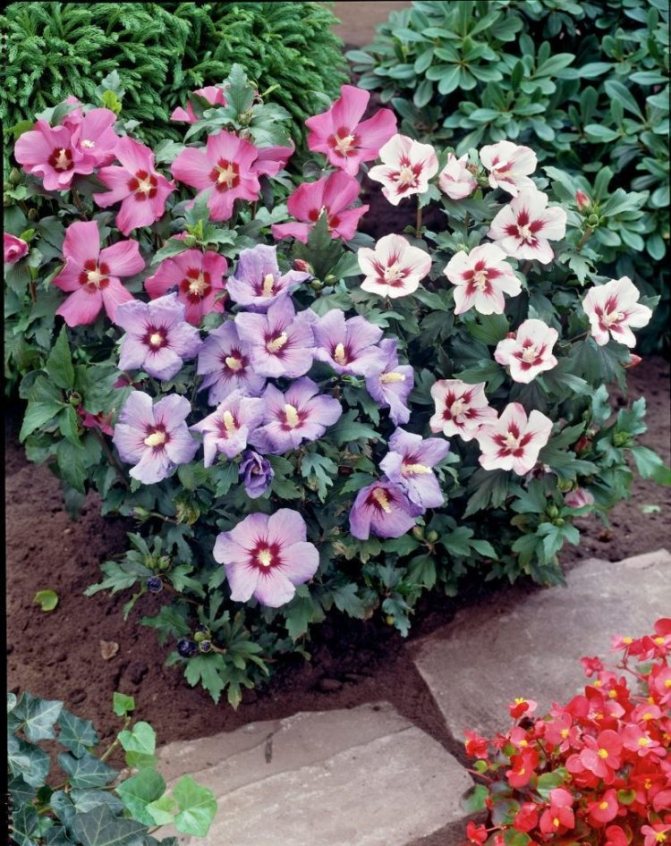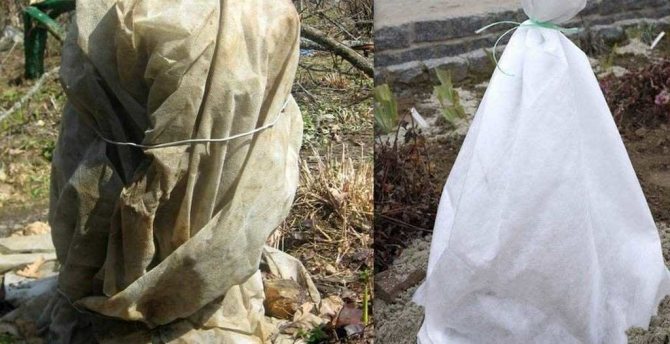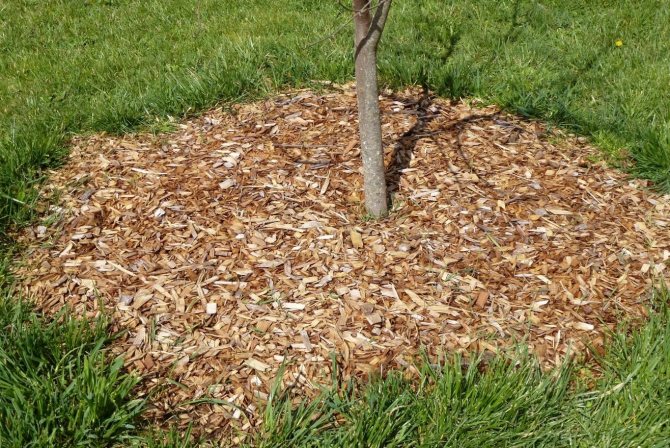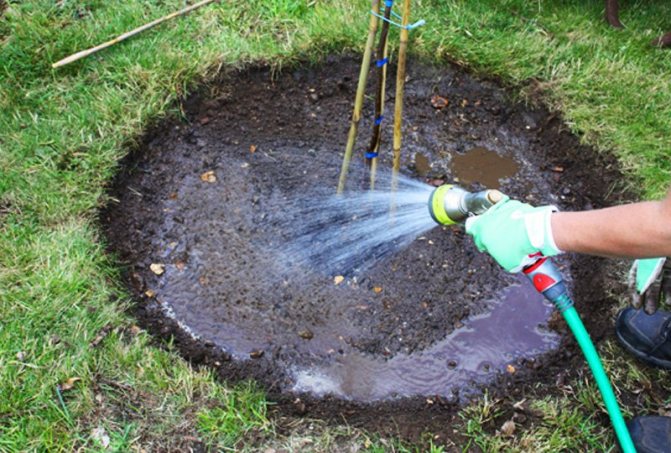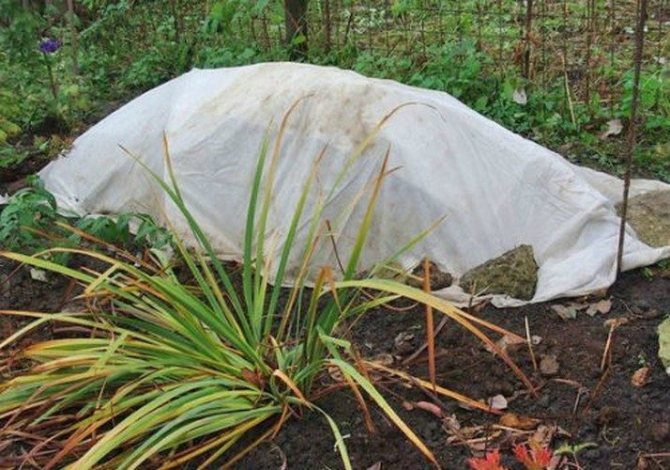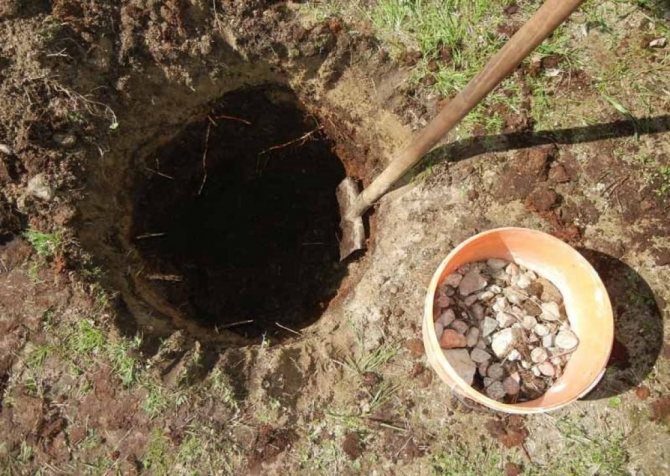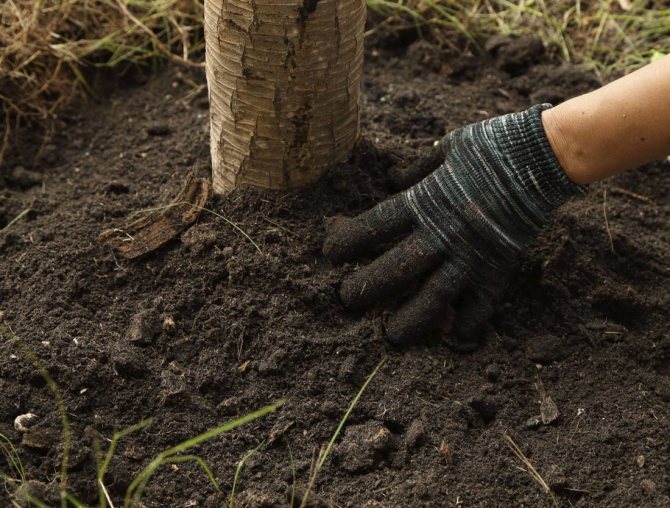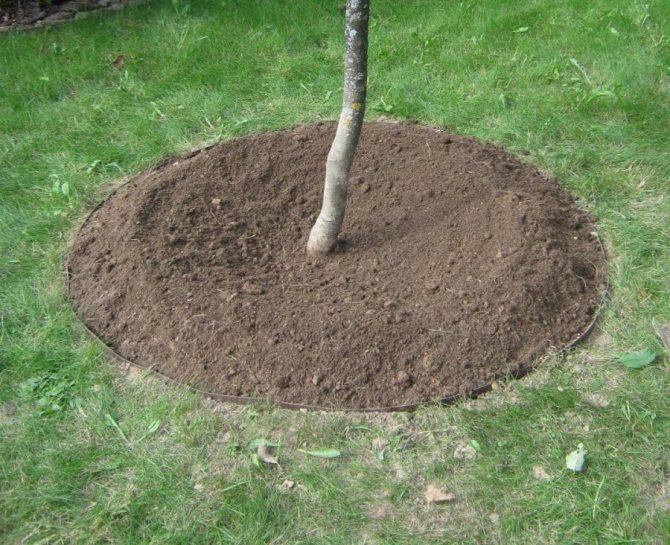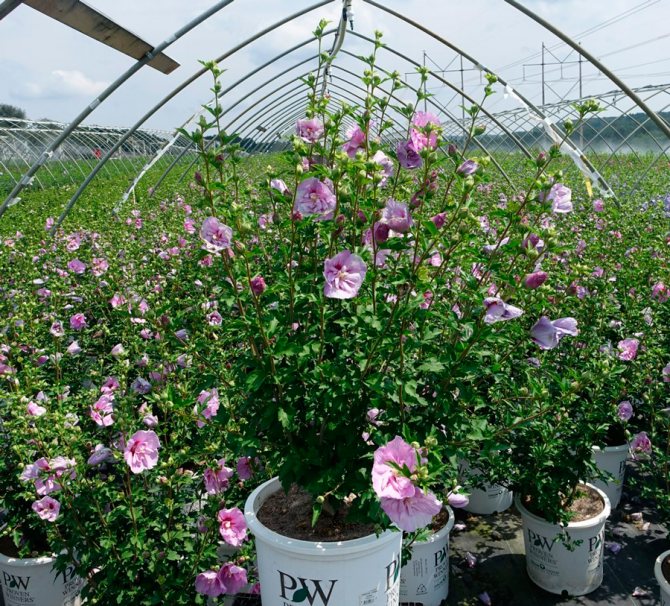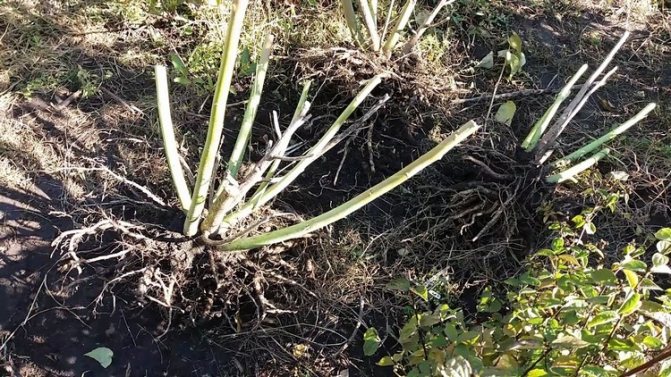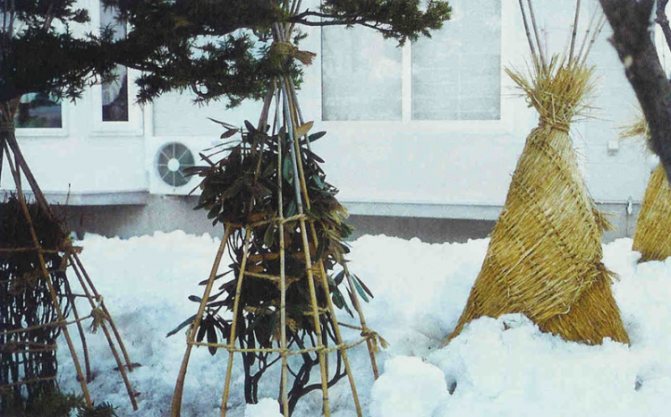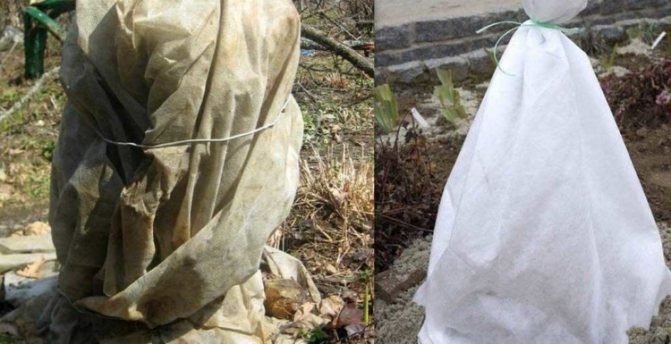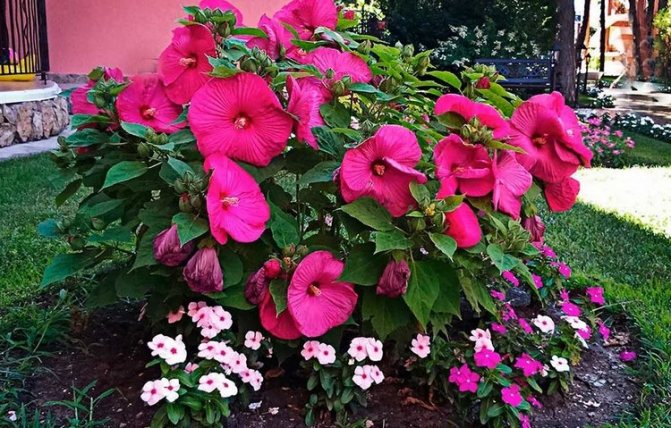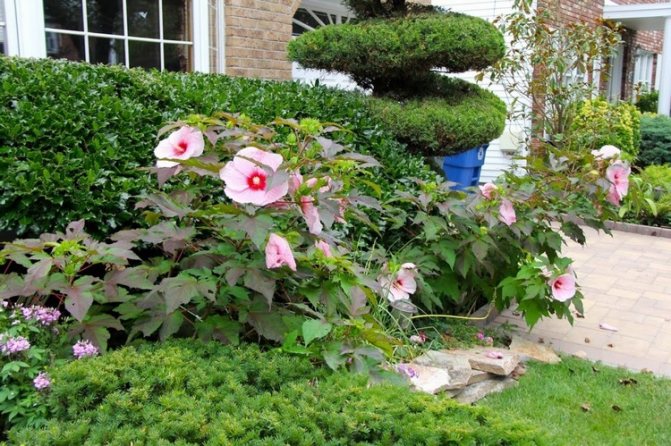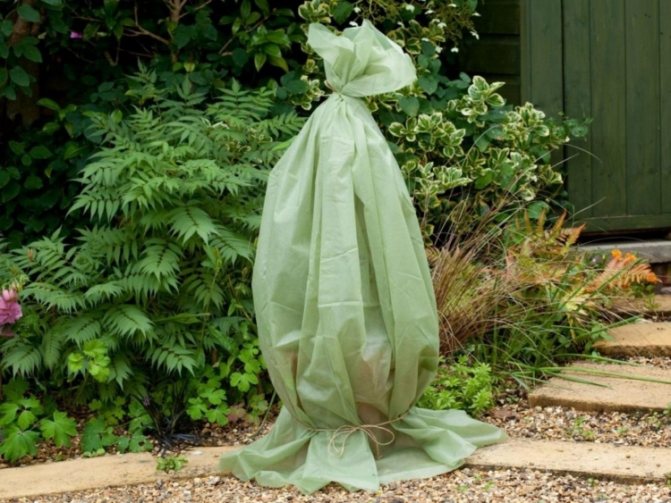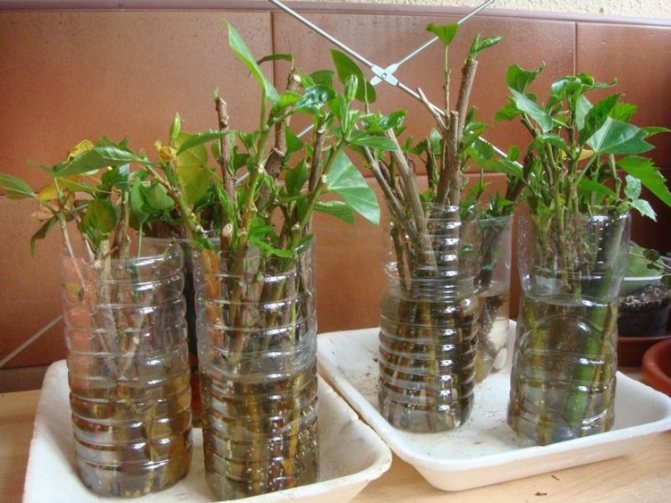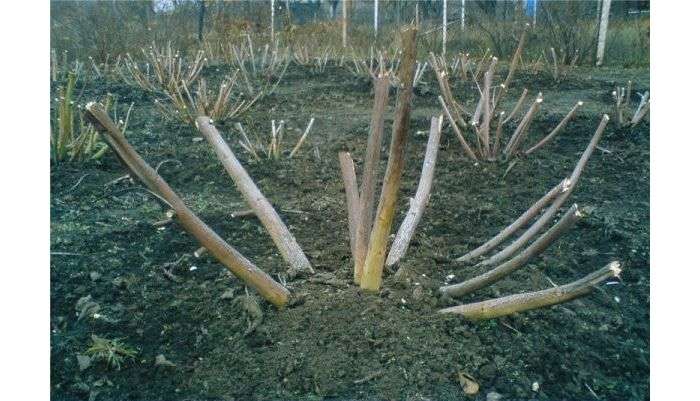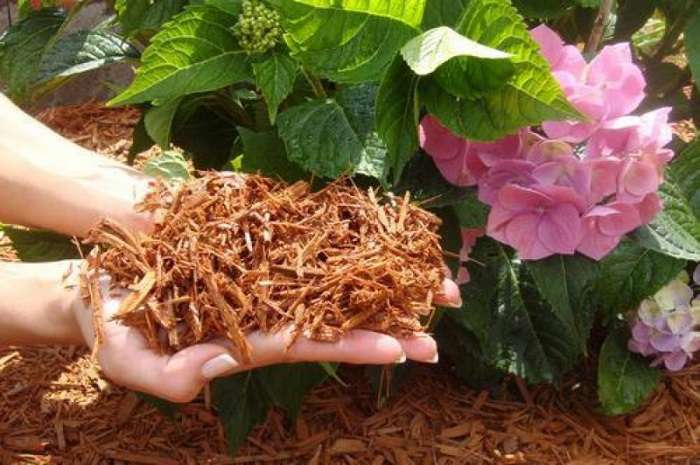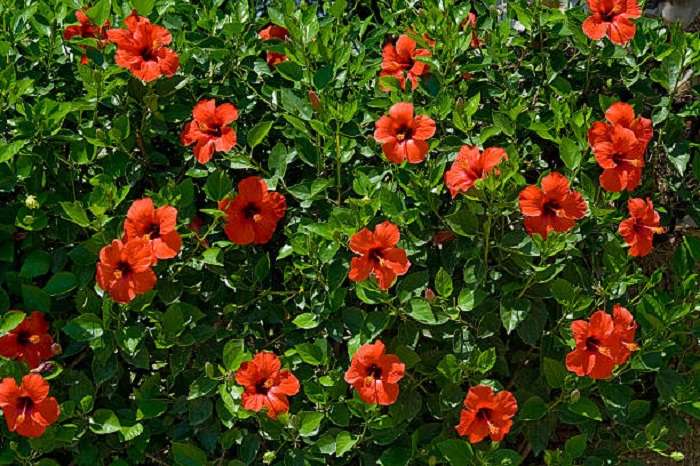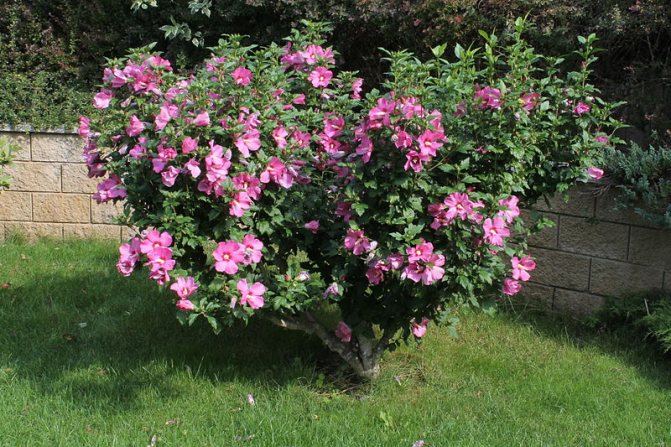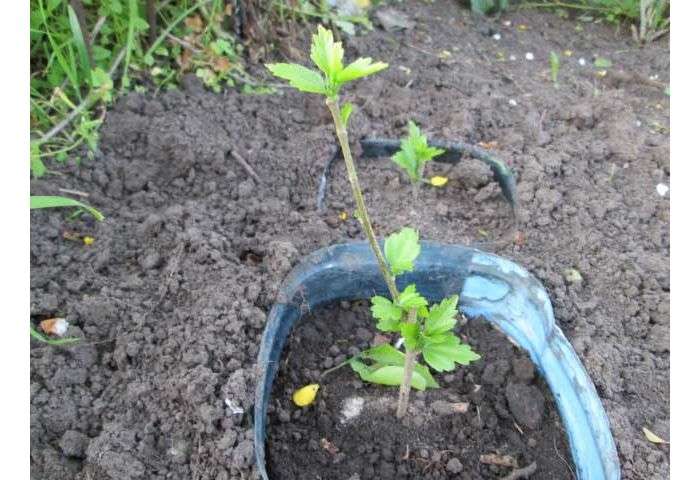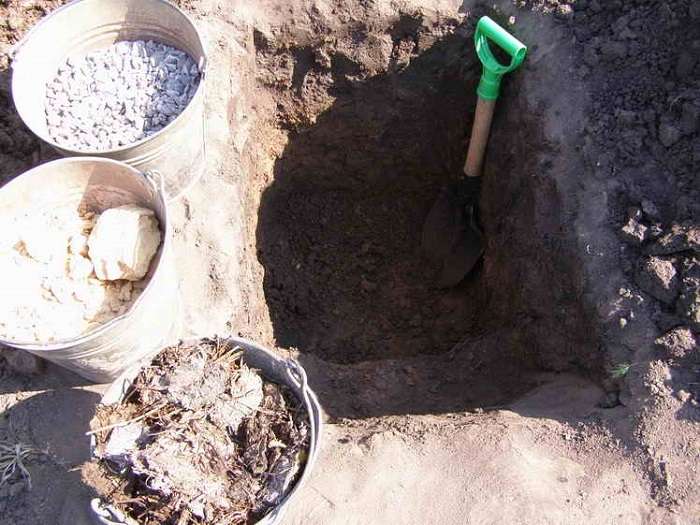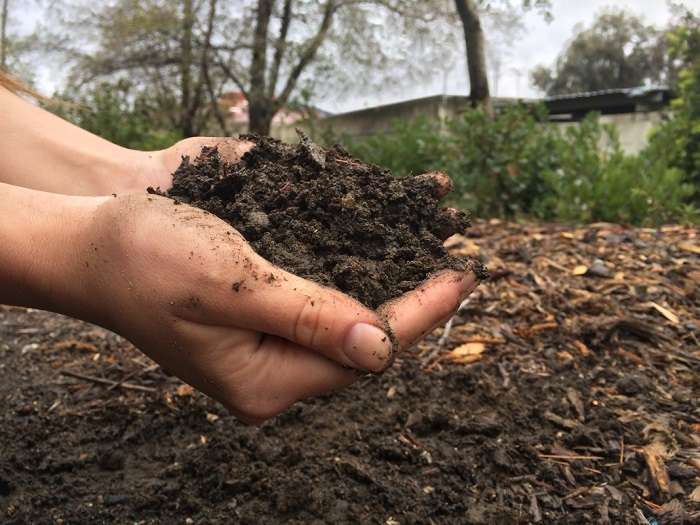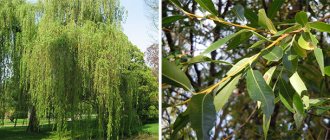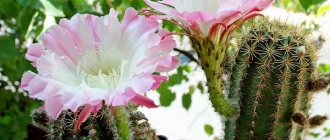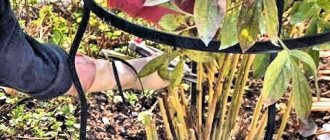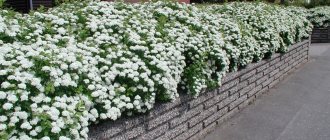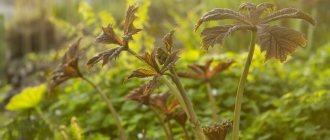The genus hibiscus (Hibiscus) has more than 220 species of deciduous or evergreen shrubs and herbaceous plants of the Malvov family. The vast majority of species grow in warm tropical regions, therefore, in temperate climates, they are cultivated as indoor plants.
Only two members of the genus are able to withstand frosty winters and the most popular of them is the Syrian tree-like hibiscus - an ornamental shrub, which does not require much time and effort to care for in the open field.
The Syrian or garden hibiscus (Hibiscus syriacus) is native to the temperate subtropical regions of East Asia and is the official symbol of South Korea. In many countries, it is often called the Sharon rose or the Syrian rose.
Hibiscus - species and varieties
When I started writing this article, I did not think that the classification of garden hibiscus, dividing them into species, varieties would cause difficulties. But it turned out to be a rather difficult task. I did not find a clear systematization of species, varieties. But I can still share some information.
There are wild and domesticated species. There are annuals and perennials. Of these, tree-like, shrub, herbaceous species can be distinguished.
Wikipedia, by the way, gives its classification of species:
- Hemp, or Kenaf (Hibiscus cannabinus) - used by the spinning industry in some tropical countries;
- Chinese, or Chinese rose (Hibiscus rosa-sinensis) - indoor culture;
- Rosella, or Sabdarifa or Sudanese rose (Hibiscus sabdariffa) - from the mallow family, common in tropical countries, was originally bred in India;
- Syrian (Hibiscus syriacus) is a common perennial species in Russia for growing outdoors. Frost-resistant, perennial, shrub;
- Triplet or Northern (Hibiscus syriacus) is an annual herb growing on mountain slopes, along rivers and lakes in Asia, India, the Mediterranean Sea, etc.
Separately, another species is mentioned separately - Swamp or Musk (Hibiscus moscheutos) - a perennial herb, a favorite of gardeners in the south of Russia. In winter, the aboveground part dies off.
Let's try to figure out what types of hibiscus exist. We will take as a basis the classification according to the methods of growth and forms of development: herbaceous, shrubby, tree-like.
- Herbaceous - tall shrub with strong erect branches, large leaves, large flowers. The diameter of the flower (depending on the variety) can reach 40 cm. The bush dies off annually in the fall, and in the spring it throws out young shoots again.
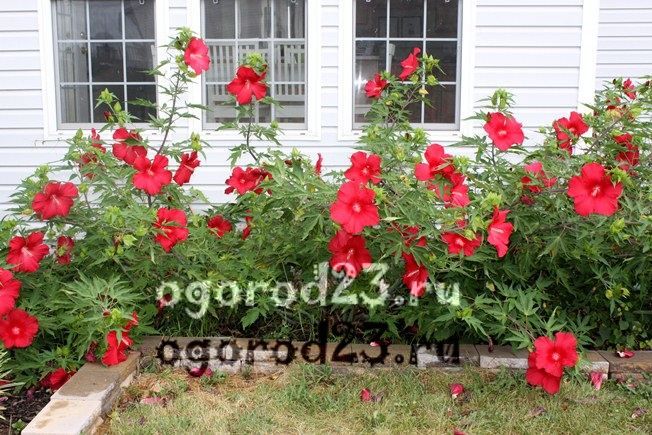
Grassy
- Shrub is a slow-growing deciduous shrub with many branches. Blooms profusely throughout the season. Flowers are medium in size from 5 to 25 cm in diameter. By the way, all shrub species can be formed into one trunk, getting beautiful flowering trees.
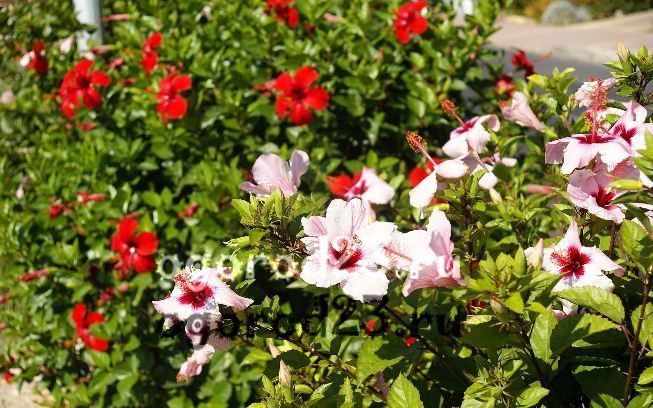

Shrub
- Arboreal - a single-stemmed deciduous tree that can grow up to 5-6 meters in height. The whole season is covered with flowers up to 12 cm in diameter.
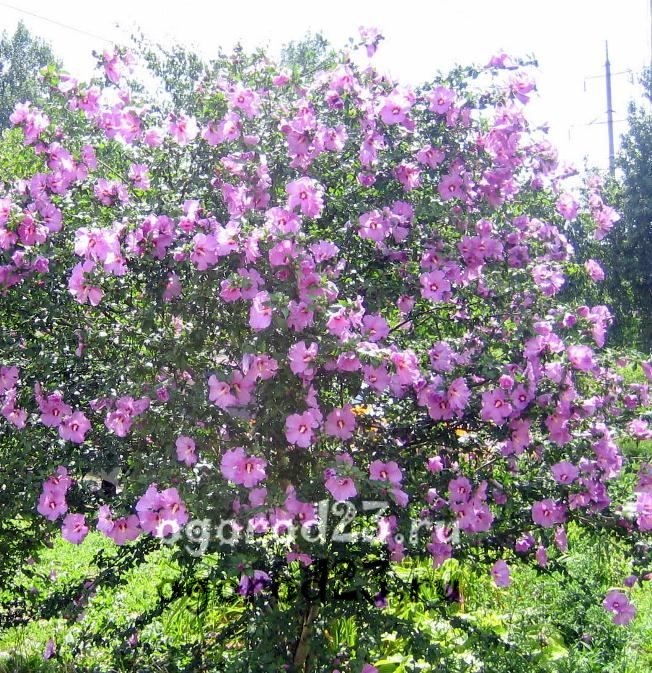

Tree-like
A common feature of all varieties: the flower lives only for a day, but at the same time one faded bud is immediately replaced by a new one that has blossomed, so the flowering seems to be constant.
Now there are new varieties - flowers can stay fresh for more than one day. But it all depends on the degree of lighting.The more sunny place you choose for your pet, the longer the lifespan of one flower. But still, the flowering period is short - from one to 2-3 days.
Landscape designers are very fond of garden hibiscus of all kinds. City gardens, parks are often decorated with shrub views. And in a private courtyard, summer cottages, you can increasingly find herbaceous species.
Testimonials
Karpenko Olga, 45 years old, Astrakhan
I have been doing gardening for 5 years now. I like to plant unique varieties of roses. I have more than 20 varieties of them. But last year, my godfather suggested that I plant a garden hibiscus. I had never heard of such a plant before. She offered me seeds that she collected from her bush. I started the cultivation process in the fall. When the sprouts began to form leaves, I transplanted them into separate pots. I did everything according to the recommendations of my godfather. I managed to save only 3 seedlings, the rest all died. It was, of course, a pity how many bushes there could be. As a result, when I planted the seedlings in the ground, all three took root in me. I planted them near my porch. Now I'm waiting for them to bloom. The first flowers should be next year.
Potekhina Galina, 37 years old, Rostov on Don
My love for hibiscus began during my vacation in the Crimea. The whole family went to Yevpatoria to rest. There, in the yard where we rented a room, there were about 20 hibiscus bushes. Such beauty was simply beyond words. The photographs taken are still pleasing and warm with memories of the rest. I could not pass by such gorgeous bushes, I had to beg a few cuttings from the hostess in order to breed such beauty at home.
Arriving home, I put them in a jar of water. After 3 weeks, several of them sprouted. Joy knew no bounds. I thought that now my garden will riot with new colors. But, unfortunately, I was not able to save them during the winter. Due to severe frosts, my cuttings did not take root. I don't know, maybe I did something wrong. Now I am thinking of ordering the seeds of this beautiful plant via the Internet. Still, I don't want to give up, I dream that I would also have such gorgeous hibiscus bushes in the yard.
Kravchenko Maria, 29 years old, Kiev
I have been doing floristry for 8 years. By the nature of her activity, she told a lot of gorgeous flowers, but recently I especially fell in love with hibiscus flowers. They are unlike any other flower. I often use them in decorating weddings and holidays. Now I decided to breed such bushes in my country house. I read on the Internet that it was necessary to wait a long time for the bush to bloom, so I decided to order ready-made young bushes via the Internet.
Herbaceous hibiscus
These are hybrids that were bred by crossing three varieties of North American origin - holly, pink, red. This is a perennial, which, after wilting of the ground part, provided that the root system is covered, can withstand frosts down to -30 ° C.
The rhizome of one specimen is quite powerful, it looks like a tuberous one. The bush blooms from mid-summer to late autumn. Ten or more flowers can bloom at the same time.


Herbaceous varieties are in great demand because of the large (up to 30-40 cm in diameter) bright colorful flowers (white, red, pink, burgundy, etc.), sometimes double.
The height of this plant can reach three meters. The branches manage to reach this length in one season.
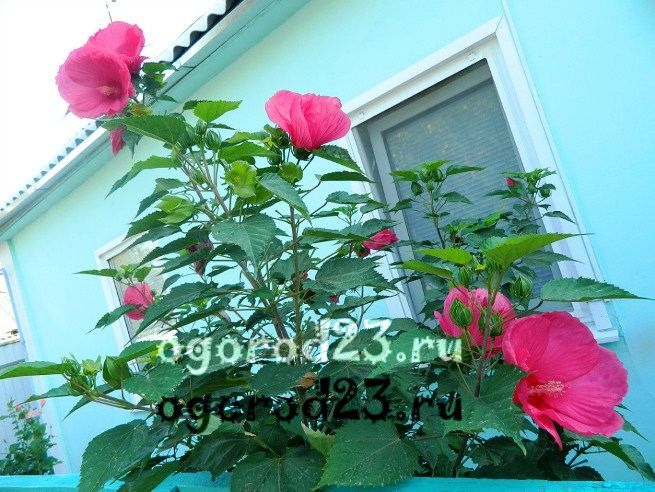

Among the herbaceous, the most popular among gardeners are marsh. Why are they called that? Because for the first time, whole thickets of this incredibly beautiful plant were discovered in the marshes along the Mississippi River, where they are perennial. In our country, they also belong to perennials, but with the dying off part of the bush in winter.
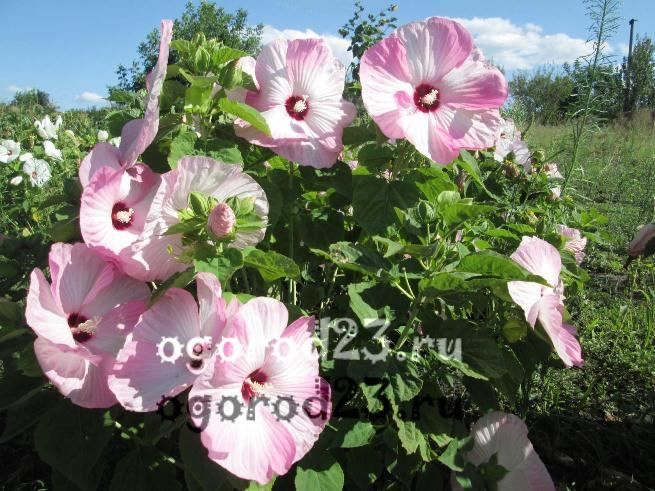

Swamp
In flower beds, herbaceous varieties look great together with short neighbors. For example, in the center of the rose garden, your pet will be a majestic king.
Huge flowers the size of a plate will surprise not only you, but your guests, neighbors, just passers-by.
Herbaceous hibiscus varieties
Copper King is a compact bush. Rounded compact shape is achieved by annual formation no more than 120 cm in height. Dark green, delicate, shape like maple, leaves can change color, which depends on the ambient temperature. The flowers are large, up to 30 cm in diameter, the color of strawberry mousse is white-pink with bright pink stripes. The core of the flower is crimson-red. Resistant to disease.
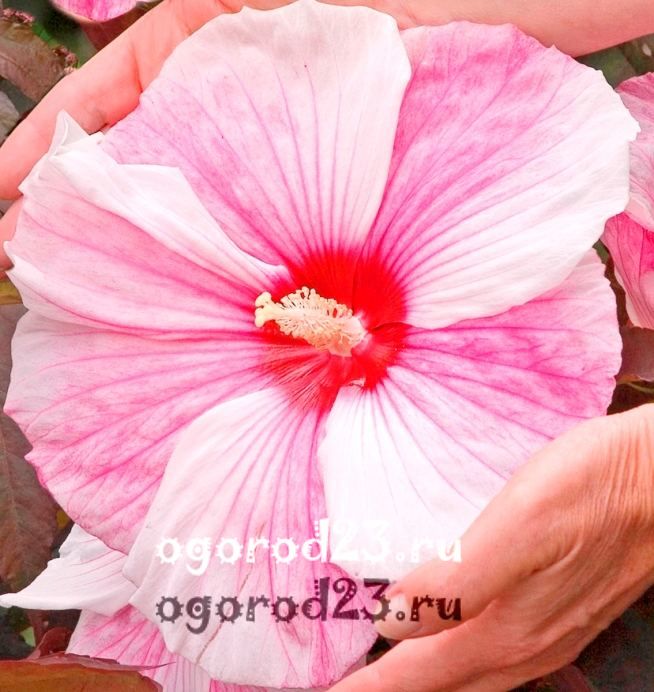

Copper King
Variety Crenberry Crash - grows a rounded, lush shrub with greenery from the roots, 90-120 cm high. It has feathery green foliage with purple veins. Flowers are large, up to 25 cm in diameter, juicy burgundy color with dark stripes on the petals.
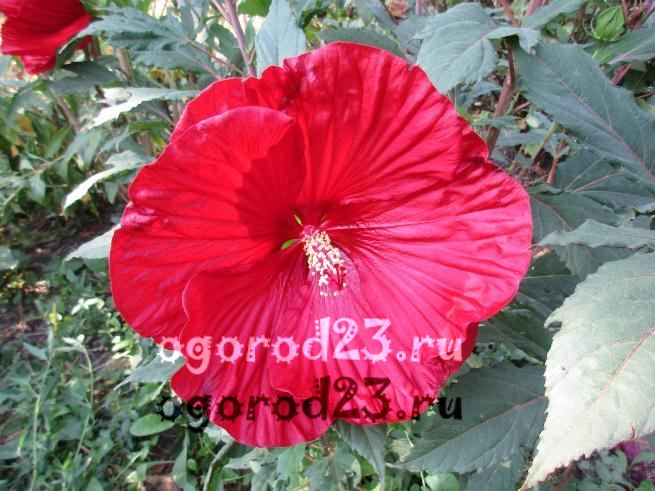

Crenberry Crash
Variety Old Yella is a strong bush with strong shoots up to 100-120 cm high, with planting from the roots. The leaf is green, pinnate, maple-shaped, with a purple tint in sunlight. The flowers are huge, 30 cm in diameter, white or cream in color with a red core. The petals are wavy.
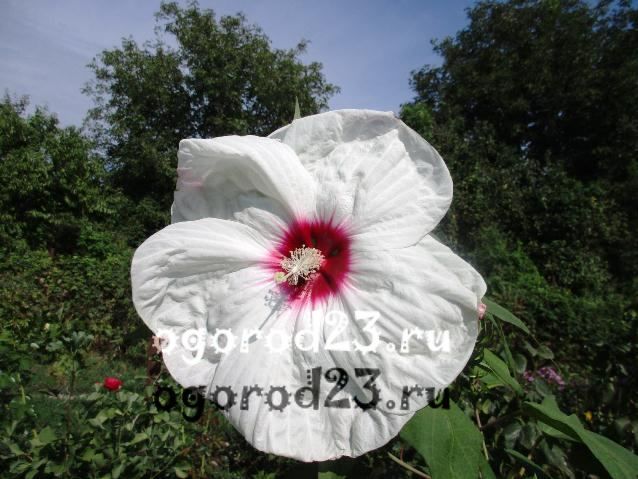

Old Yella
Separately, participants in various forums discuss garden yellow herbaceous hibiscus - this species has several varieties, but, according to some growers, all of them can only be annuals! They write in plain text: “Do not believe if they are trying to sell you a perennial yellow, such a hybrid does not exist, although breeders are trying to achieve this. This species will have to be sown with seeds every year. "
But, nevertheless, some amateur gardeners claim that they grow yellow perennials. Maybe you, the readers, can clarify? If your garden is decorated with this flower, you have experience in care, cultivation, write a comment.
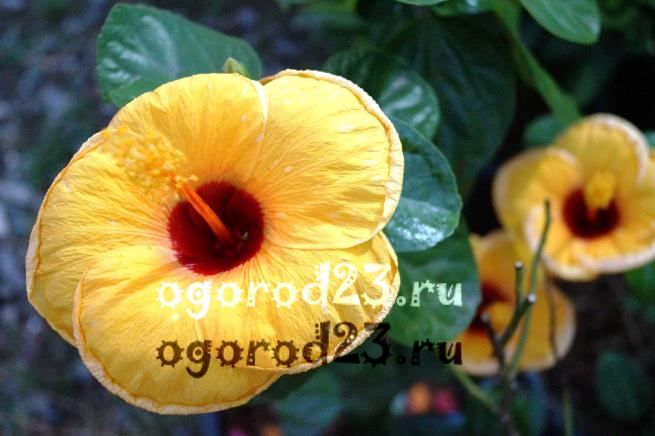

Popular varieties
It is better to buy several bushes with different, well-matched colors. For example, you can choose:
- Syrian Blue Chiffon is a novelty. Pure blue flowers turning into deep blue. Requires shelter for the winter or tub cultivation;
- frost-resistant and long-flowering variety Duc de Branat, formed in the form of a ball, looks great in any combination with garden plantings;
- all chiffon varieties look great - Lavender Chiffon, White Chiffon, China Chiffon, Pink Chiffon.
Most often, bush species are grown, forming in the shape of a ball. The petals of the buds are double or even along the edges of the most bizarre color, of different sizes.
Shrub hibiscus
Among the shrubs, the most popular is Syrian, which has many varieties. Its flowers are smaller in size than those of the herbaceous species, reaching a diameter of 12 cm. The colors are varied: flowers of purple, white, red shades, there are varieties with a two-tone color.
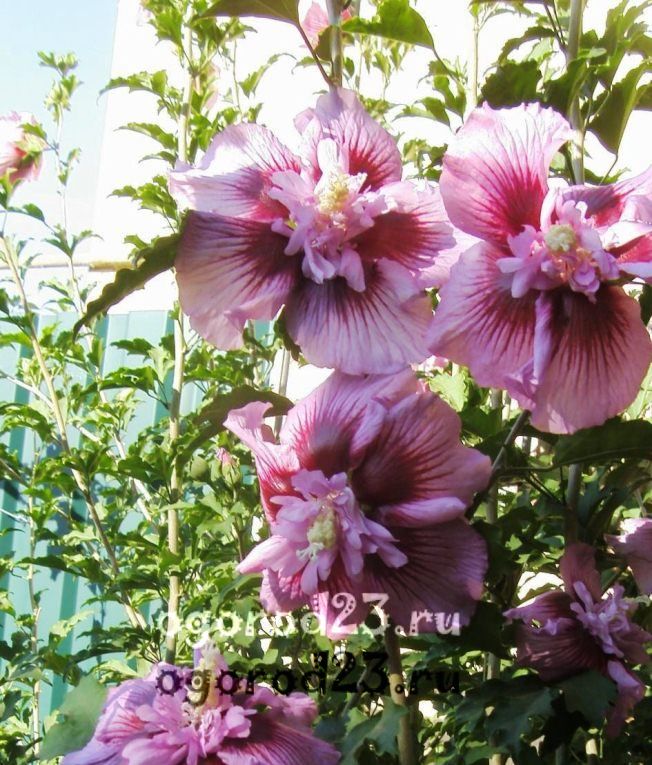

The splendor of the flowers of some varieties is complemented by long pistils with fluffy stamens, which attract bees and butterflies.
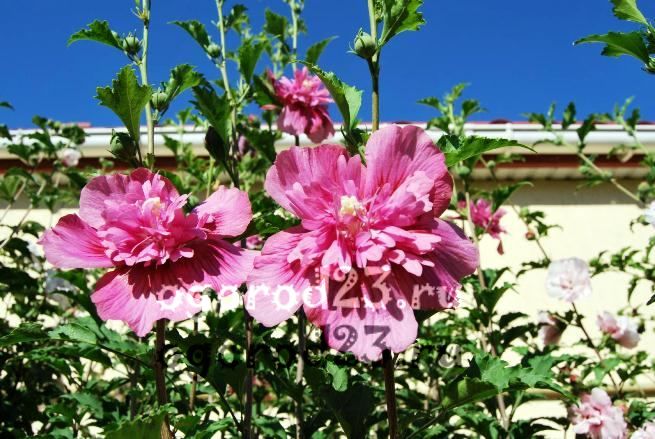

With proper care, the bush is usually abundantly strewn with flowers, looks very delicate, although it grows more slowly than herbaceous. In a bright place protected from the wind, the scorching sun, the bush can grow up to 20 years.
The height of the bush reaches two to three meters, less often four to six, and a width of 1.5 meters.
But having acquired a young specimen, do not be tormented by the question: why does not hibiscus bloom. The Syrian shrub blooms only after 3-4 years.
Shrub hibiscus varieties
Ardens variety – perennial deciduous shrub, growing up to 2-3 meters in height. Easily shaped like a standard tree. Dense bloom with rather large (up to 14 cm) double flowers of lavender or pale pink color.
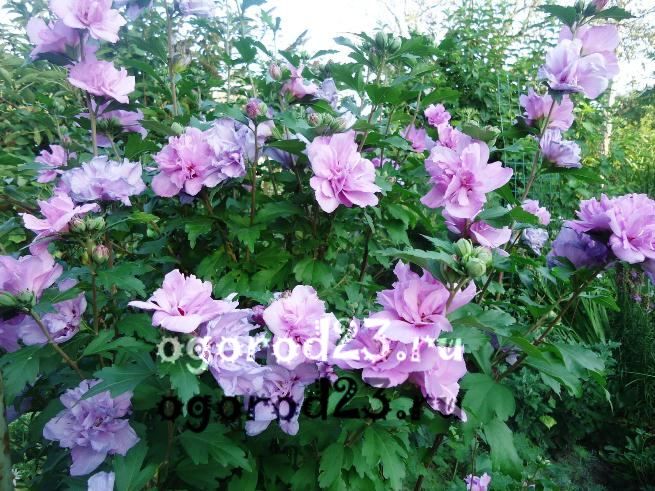

Ardens
The Blue Satin variety is a perennial spreading deciduous shrub.The height can be up to 4-6 meters. Often they are formed with a stem to make the bush a compact tree, or with one trunk, removing excess shoots in the first years of life. The flowers are large, 15 cm in diameter, of blue, azure and cornflower blue flowers. The color depth depends on the lighting, the more it is, the richer the color of the flowers.
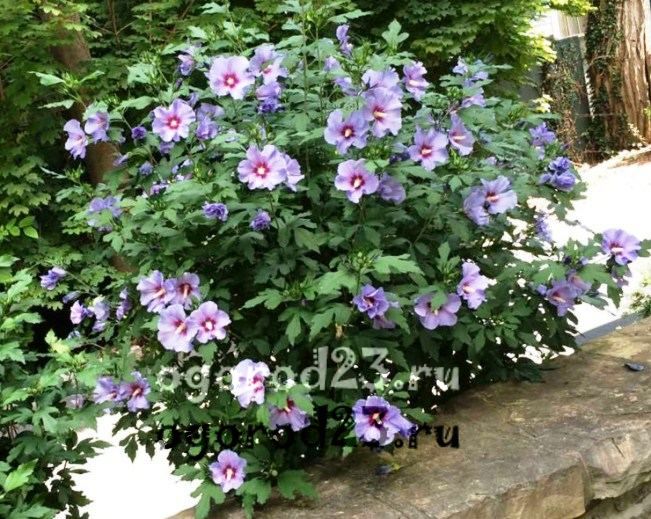

Blue Satin
Description
Garden tree hibiscus grows rather slowly, in its natural environment it can reach a height of more than 3 meters and a width of 2.5 meters. In horticultural culture, it is a low bush or standard tree from 1.5 to 2 meters high.
Shoots are rigid, straight, slightly branched, covered with dark green serrated leaves, which appear on the shoots in late spring.
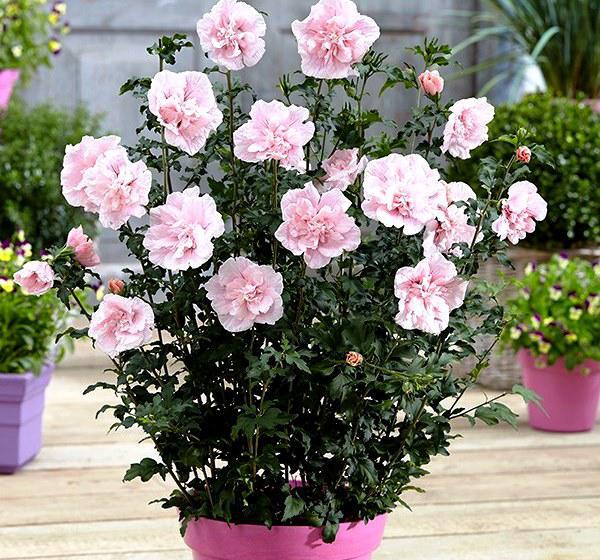

A distinctive characteristic of many varieties of the Syrian rose is their late flowering period - from late July to October. This feature and the exotic appearance of the flowers made the tree-like hibiscus a real gem of the outgoing summer.
Large flowers form on the shoots of the current year and, depending on the variety, can be simple, semi-double, double, with wavy petals along the edge, monochromatic or two-colored, often with a contrasting eye in the center.
Types and varieties of spirea with a photo
The color is presented in a wide range of colors - white, lilac, purple and all shades of red. The most valuable forms of lavender blue and blue-blue color.
Tree hibiscus
Tree-like is an excellent solution for novice florists - after all, it is quite unpretentious. The main advantage is that it winters well in the south, without requiring additional shelter, except just in the first years. The tree differs from shrub species, only outwardly - one trunk, which can branch out at a height of about half a meter. The photo below is a young four-year-old tree. This is his second bloom.
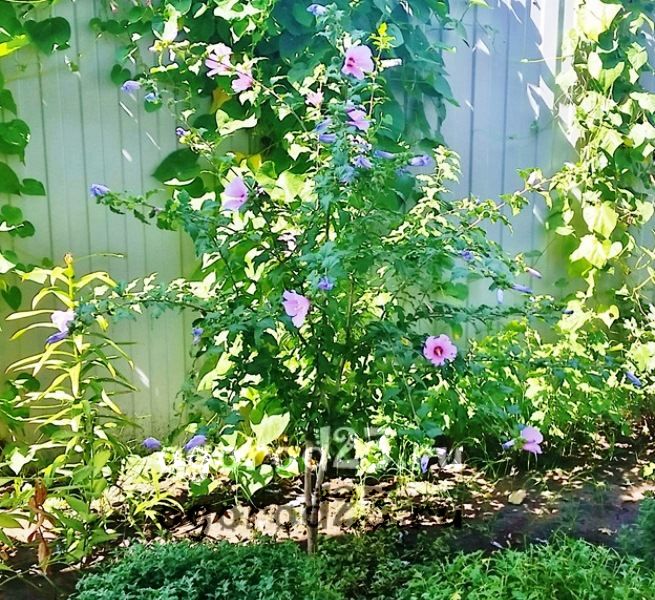

An adult plant can grow up to 5 meters tall, even taller.
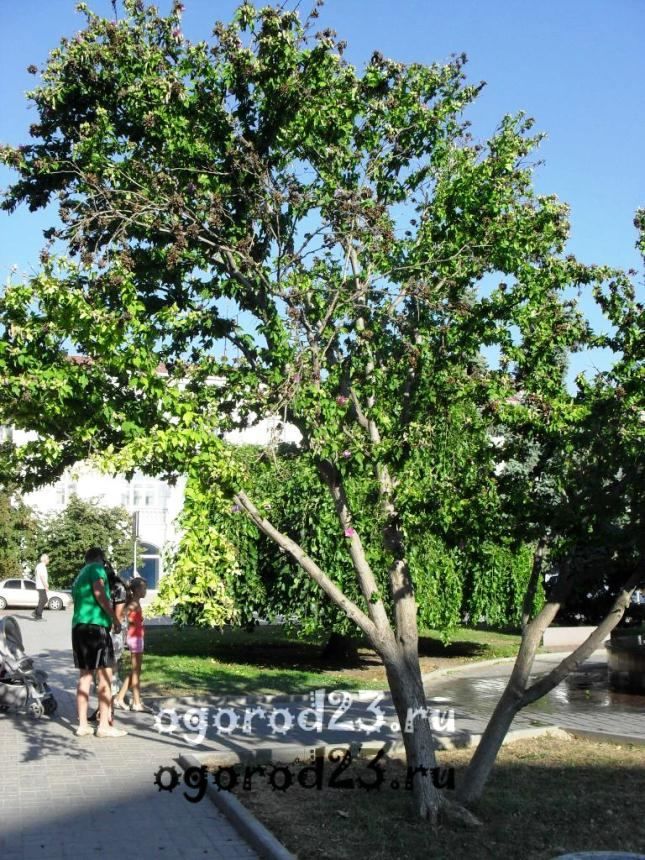

Treelike hibiscus in Sevastopol
The leaves of the tree are large, bright green, flowers of medium size, bright in color, there are also double, two- or three-colored.
In what ways can hibiscus be propagated?
Garden hibiscus is a plant that can be propagated by cuttings and seeds. But it is worth noting that by propagating this plant with seeds from hybrids, it is not always possible to get flowers of this size or color. Hybrid hibiscus is designed to be planted every year. These varieties are often annual.
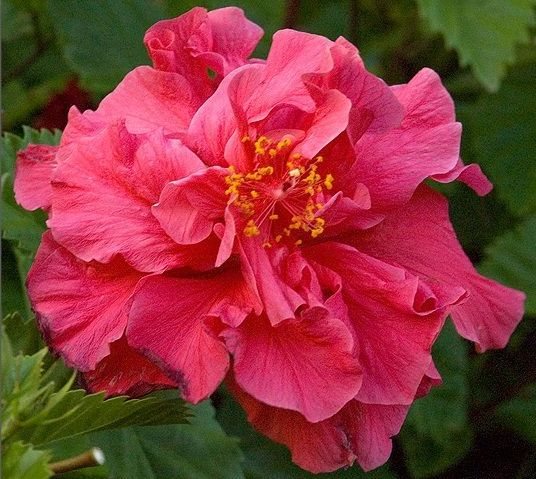

How to care for hibiscus
Any variety of this plant loves the sun or bright light. Care is not difficult - timely watering, weeding, regular feeding with nitrogen or phosphorus fertilizers with a monthly frequency, at least. In case of heat, it is worth avoiding top dressing at the root, it is better to use nutritious spraying with fertilizers on the leaf.
Closer to autumn, it is necessary to apply potash fertilizers, stopping nitrogen or phosphorus fertilizing, this will help prepare for wintering.
It is worth noting that all garden hibiscus loves rotted needles. It can be added to the planting hole when transplanting or planting seedlings, it can also be used to mulch the rhizome zone.
Many gardeners love to indulge their plants with a summer shower over the foliage, Hibiscus will not give up this pleasure. The main thing to remember is that “water procedures” can only be carried out closer to sunset, when the sun will no longer burn the leaves.
The simultaneous wilting of all flowers can become an alarming sign - the plant does not have enough moisture! Urgent abundant watering will help to reanimate.
To protect against the main enemy of your pet - aphids, it is recommended to plant lavender bushes nearby, the aroma of which will scare away pests.
Herbaceous, also some shrub varieties require shelter for the winter, so many gardeners prefer tree-like representatives of the genus because of their ability to delight with their beauty for many years without special care, preservation of pets in winter.
It is worth paying attention to the features of caring for different species.
Features of caring for herbaceous hibiscus
Watering, fertilizing, weeding, as with all species.
With the onset of autumn, the stem, leaves, wilted flowers die off. The nutrients from them are gradually absorbed by the root system.This makes it more developed, strong, and makes it easier to endure frosty winters.
That is why you should not cut the stems of herbaceous species before they are completely dry. In the south, where there is often no natural shelter in the form of snow, an artificial one should be properly created.
The first thing we do: cut off the dried out above-ground part, spill it well with water, loosen it, huddle the rhizome zone. You can sprinkle with humus or mulch. Sawdust, fallen leaves, dry grass, coniferous litter are suitable. If it is needles, then in the spring you can not remove it, but leave it on top, slightly mixing it with the earth by loosening.
The resulting bump from above should be covered with a white soft covering material, pressing it with stones or branches, building a kind of hut. When the frost has passed, carefully release the hemp of the plant from the warming cushion, being careful not to damage the buds. Indeed, already in May, young shoots appear, in which it is advised to pinch the tops for splendor.
Every three years, it is necessary to divide the rhizome of the herbaceous hibiscus so that its flowering does not weaken, does not diminish. After all, every season the number of shoots triples. The struggle for nutrients and moisture is becoming more difficult. In the first year of life, the number of main shoots is one, in the second two to nine, more often five, but after three years there are already three times more of them. The time comes for dividing the bush, which, by the way, is one of the ways to reproduce it.
Syrian hibiscus care
An adult shrub tolerates our Kuban winter well, and it is better to wrap the branches of a young pet (1-2 years old) with white covering material, and sprinkle the rhizome zone with humus or thoroughly mulch. The root cover layer must be at least 15 cm high. Don't forget to free the plant from it in the spring!
The Syrian species wakes up late enough, do not be afraid - it should be so, it's just some of its peculiarities.
Shrub fertilizers like phosphorus fertilizers (for example, Bud), which activate flowering. Closer to autumn, you need to start introducing potash preparations in order to prepare the shrub for wintering. Tree care differs only in that in winter it does not need to be covered. The exception is young seedlings, which should be covered for the first 1-2 winters.
Top dressing
Due to the abundant flowering, the plant requires multicomponent fertilizing with a predominant content of phosphorus, which stimulates budding.
They are fed every two weeks, starting in early June and ending no later than the end of August, so that the plant has time to prepare for winter. Potash fertilizers are added to the last dressings. It is also useful to mix compost with soil once a year in spring and sprinkle it around the bush.
How hibiscus reproduces
It depends on the species. For example, tree varieties can only propagate by cuttings, grafts, seeds.
Shrubs, in addition to grafting, grafting, sowing seeds, can be propagated by layering.
Herbaceous plants are easiest to reproduce by dividing the bush, but the above methods of grafting, sowing with seeds are also inherent in them.
Seed propagation is not difficult: it is done like any sowing without any special tricks.
Work starts from January to March. First, it is recommended to soak the seeds for 10-12 hours in Epin's solution. After that, rinse them with a weak solution of potassium permanganate.
For sowing, you will need a container, a mixture of sand and peat, as well as a shelter (glass, polyethylene or cling film). Soaked seeds are sown in moist soil and covered. So that the seedlings are not long in coming, the temperature should be maintained at about + 25 ° C. Also, do not forget to ventilate the container with crops, remove condensation drops, and, if necessary, moisten the soil surface. After the leaves appear at the seedlings, they can be planted in separate pots.


And in May, the stronger seedlings move to a permanent place, and their weak counterparts to a temporary one - for growing.
When propagated by seeds, garden hibiscus will bloom for 3-4 seasons. Please note that he may not retain the decorativeness of his parent. Therefore, seed propagation is not the best way to acquire a flower with exactly the properties that you like so much.
Propagation by cuttings is the most popular method among amateurs. It can be done in two ways.
- Cuttings cut in summer with 3-4 buds are dipped into water with the addition of Kornevin or another stimulator of the growth of the root system. After the roots appear, the cuttings are planted first in containers with peat soil for wintering, and in the spring - in open ground.
- Cuttings cut in summer with 3-4 buds are treated with a root system growth stimulator as in the first method. But after that, they are immediately planted in greenhouse containers with wet peat for rooting. Cuttings that have given roots are planted in pots for wintering, and in the spring they are planted in open ground.
When grafting, there is a high probability that your pet will delight you with its flowering in the first year.
Reproduction of garden hibiscus by dividing the bush is more suitable for herbaceous varieties. By the way, dividing the rhizome is a necessary technique for caring for herbaceous species to maintain high-quality flowering. This is one of the fastest, most convenient breeding methods.
In early spring, carefully dig out a 3-4 year old bush with a pitchfork, divide the rhizome with a knife or shovel. As a rule: one trunk - one separate plant. When dividing older bushes, 2-3 trunks are allowed per new copy.
Sprinkle the cuts with ash or crushed coal.
The resulting parts of the rhizome must be planted immediately. Well-spilled planting pits with nutrient soil should be prepared in advance.
We cover the rhizomes with earth, tamp the surface, water again. After two weeks, the first nitrogen fertilization can be carried out. With this care, the separated bushes quickly sprout, delight their owners with flowering already in the first season after planting.
Reproduction by layering and by grafting should be left to professionals, since these methods will require not only skills and knowledge, but also special tools, patience, composure, that things are not always compatible with amateur gardeners. Especially when fast, reliable results are required.
How to choose planting material
Having decided to buy hibiscus, first of all, you need to pay attention to local nurseries that grow ornamental plants. It is from them that high-quality planting material is acquired, acclimatized and adapted to local conditions.
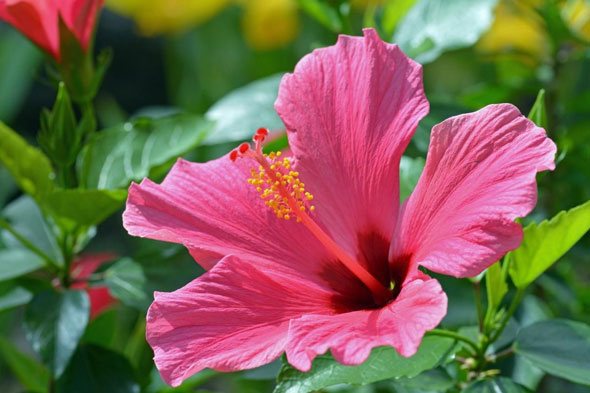

Hybrid species bought in another region or cataloged, even the most exquisitely beautiful, can be a disservice. Either they will freeze out, or they will wipe out in the first winter after planting.
When buying, you should clarify how tall the plant will be, the conditions for good survival and ways of care. Particular attention is paid to the root system, so it is better to purchase the plant not in a container. The roots should be strong, well developed, without decaying branches.
It is better to choose an individual not younger than 2-3 years old. At this age, a period of adaptation to the cold season has already passed, he will be able to show greater frost resistance, it will be easier to tolerate acclimatization in a new place.
Pruning hibiscus in fall or spring when best
It is important to know how pruning affects garden hibiscus, when to do it, if it is needed at all.
They say that young bushes should not be pruned. But this is not the case. You need to trim! You need to start doing this as early as possible in order to give the plant shape, splendor, and increase flowering. After all, flower buds are laid only on young shoots.
Regular spring pruning is a necessary annual maintenance.It is also called hygienic or stimulating. Such pruning is recommended, starting in February, until the bushes or trees woke up, until the sap flow began. Do not be afraid to cut off the excess; last year's shoots must be mercilessly shortened by 1/3 of their length. Your pet will thank you with abundant flower buds. Rejuvenating pruning of hibiscus in the fall is carried out in adult specimens. For example, your bush is oversized or too thick. Cut out old dry branches, thin out the plant, leaving only the main skeletal ones.
Landscape designers advise keeping the central branch longer than the others. The crown shape will be more attractive.
In a tree-like representative, you can form a crown by pruning, for example, make it spherical.
Regular anti-aging pruning (once every 3 years) will strengthen the skeleton of a shrub or tree.
What is hibiscus, the types of which were described above, you learned, got acquainted with the rules of caring for it, the features of pruning. Now you can decide what kind of variety your garden is missing, feel free to buy yourself a Chinese beauty.
Diseases and insect pests
Hibiscus has a moderate disease rate. If properly cared for, the shrub will grow healthy. But a lack of fertilizing with nitrogen and iron can lead to the appearance of chlorosis, which is expressed in the dropping of old foliage and yellowing of new leaves. To avoid this disease, the plant must be fed in the spring with fertilizers with nitrogen, and watering should be done with iron chelate.
During dry periods, spider mites, whiteflies or thrips may appear on hibiscus. Insects can be fought with insecticides.
Growing hibiscus in a garden is not difficult if you follow the necessary care rules. A healthy plant will regularly delight the eye with variegated flowers of various shapes and colors.
Hibiscus - signs, superstitions, traditions
There are also interesting facts that cannot be ignored.
This flower is said to have magical powers.
Someone calls him the flower of love - supposedly he gives a huge amount of energy that can resurrect a departed love or ignite a new one in the family where he grows up.
Oddly enough, there is a scientific explanation for this: flower nectar is an aphrodisiac, so it may well strengthen family relationships.
And doctors say that everyone should have a hibiscus at home or in the garden, the beneficial properties of which are precisely in its exquisite aroma, containing phytoncides that suppress some carcinogens.
Well, the second loud popular name is garden hibiscus - the flower of death. Why? There are several reasons.
There is a legend that if a hibiscus bloomed out of time, got out of rhythm, then it means that there will be trouble.
Also, a wilting, drying plant supposedly portends a serious illness to one of the family members where it grows.
All this, of course, is superstition. Believe it or not - everyone's business.
Whatever superstitions tell us, it is impossible to refuse to grow a beautiful flower.
There are interesting traditions associated with hibiscus around the world. It is very interesting. For example, this plant is the national flower of several countries - Haiti, South Korea, Malaysia.
And the Filipinos use it in the manufacture of the base for soap bubbles, crushing foliage, flowers to obtain a sticky liquid.
The hibiscus flower is traditionally worn on the head by girls and women in Hawaii. Moreover, if the flower is in the hair on the left, then the woman is not free. And if the flower is on the right, then this person is open to relationships.
Plant your garden hibiscus! Care and reproduction does not require much effort. There are a huge number of species and varieties. The color scheme will satisfy even the most demanding landscape designer.This wonderful plant will decorate your garden for many years, make it unique and amazing.
Winter care
In temperate latitudes, garden hibiscus, left for the winter on the site, should winter with shelter. This rule is mandatory for species with double flowers. The plant is prepared for winter dormancy in the fall. The ground part is cut almost to the very surface of the ground. The soil is moistened and hilled. If the winter is expected to be snowless or too cold, then mulch is added to the flower in the form of sawdust or dry fallen leaves.
In November, when the temperature drops to -4-9 degrees, a shelter is built around the bush with lutrasil, spunbond or agrotex stretched over a frame. With such material, the plant perfectly tolerates winters at temperatures not lower than -16 degrees. Spruce spruce branches are able to protect the flower in winter from both cold and overheating.
In regions with harsh winters, gardeners dig up the plants and transplant them into bulky containers or boxes. The containers are transferred to a basement or other cool room where the hibiscus spends the whole winter. The bushes are transplanted back to the garden with the onset of spring.
Garden hibiscus - photo
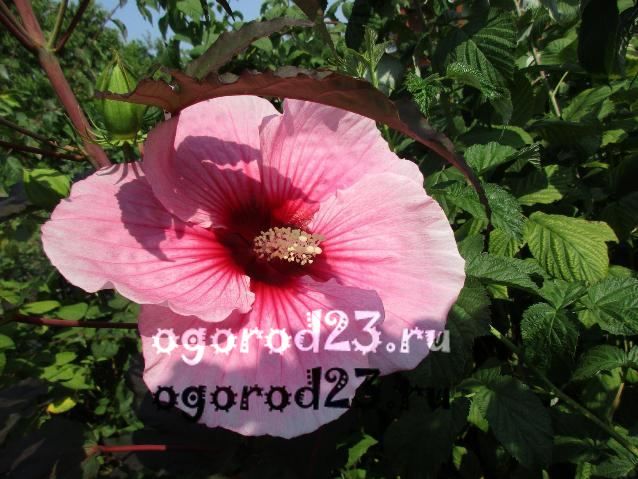

Summer Storm
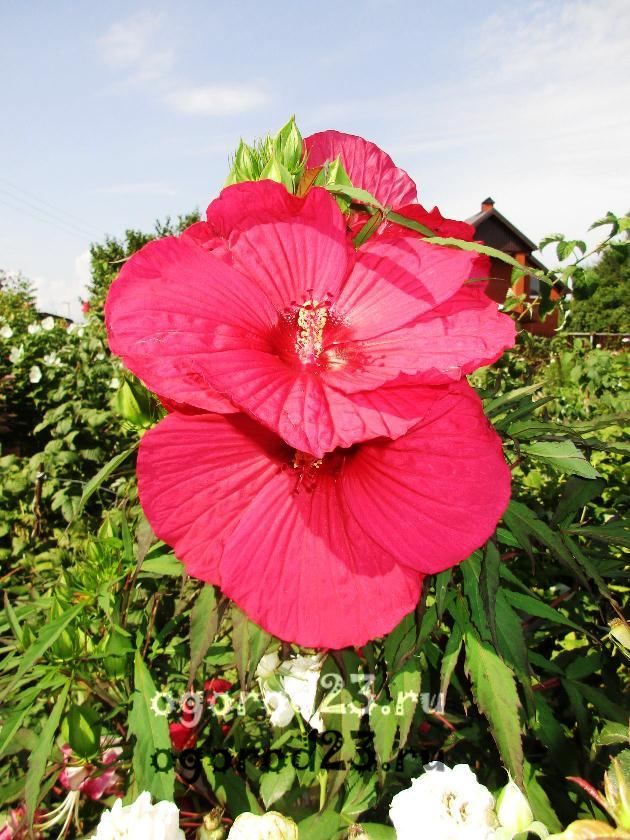

Fire ball
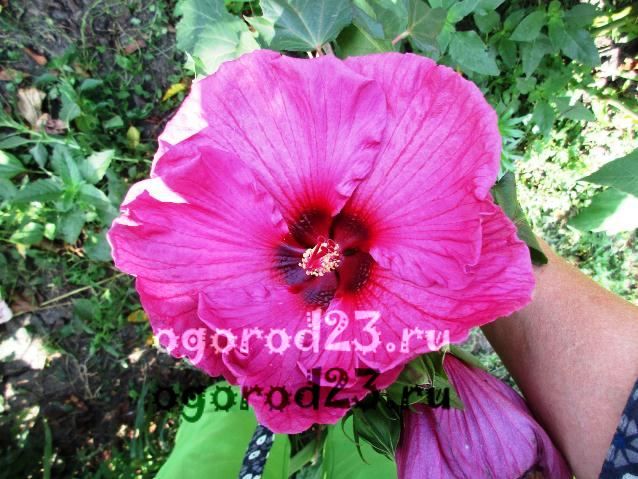

Royal James
Hibiscus at home
- Top dressing: starts in March and lasts until September. Feed every seven to eight days. Many people prefer alternation: mineral fertilizers with mullein infusion. Mix the infusion with water in a ratio of 1:10.
- Temperature: The most suitable temperature for hibiscus at home is 24 degrees. In the summer, if your pet is indoors, and not in the air, then be sure to ventilate the room every day, but do not leave the flowerpot in drafts.
- Light: this is a light-loving plant, the ideal place for it is a sunny balcony or a light windowsill. In winter, it also needs sunlight.
- Humidity: the air should not be dry, neither in winter nor in summer. Therefore, it is necessary to spray the hibiscus leaves.
- Watering: you need to water the flowerpot if necessary, preventing the soil from drying out in the flowerpot. Otherwise, it can lead to falling leaves and buds, and your flower will not bloom.
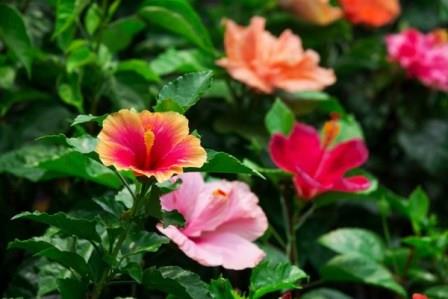

Watch the video on how to grow hibiscus at home
Tags: hibiscus, winter, pruning, preparation
About
«Previous post
Shelter a flower: step by step instructions
When the air temperature drops to -15 degrees, the plant needs to be covered, although this can be done earlier. Spruce branches are used for this, since this is the most effective covering material. But he has a minus - the interest of rodents in him, although this problem is easily solved with the help of mousetraps.
In addition to spruce branches, other garden materials are also suitable:
- spunbond;
- lutrasil;
- agrotex.
But if the frosts are strong and prolonged, then these materials will be ineffective or they will have to be laid in several layers.
The hibiscus shelter process is as follows:
- Run a frame around the plant. It is desirable that it be in the shape of a hut. Then the snow will not linger on the roof and will not break the tree. If the hibiscus is herbaceous, then it can simply be bent to the ground.
- Wrap the plant with covering material or cover it with spruce branches.
- Secure the shelter.
If the culture is tree-like and very strong, then the frame can be omitted. In this case, it is enough just to wrap the tree with large material and strengthen it.
Watering the plant
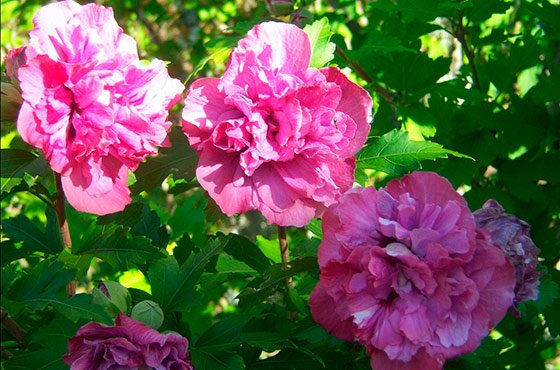

You need to water the Syrian hibiscus with rain or settled river water. It is impossible to allow the ground near the trunk of the bush to become dry. On hot days, this shrub needs to be watered daily.
Use a spray bottle to periodically remove dust from foliage and flowers. This procedure will protect the crown of the bush from the appearance of cobwebs and ticks. The first sign of a lack of moisture is the active dropping of flowers and buds. Don't let this happen.
If lavender grows in your area, be sure to plant it nearby. The smell of lavender flowers cannot be tolerated by aphids. This will protect the hibiscus from the most dangerous pest.Scares off aphids and the smell of cigarette ash (sold in flower shops).
Landing
This process is quite simple and does not take much time. To plant a hibiscus on the site, you first need to prepare a place. At the bottom of the pit, a drainage layer (about 15 cm) of crushed stone or broken brick should be laid, then about the same layer of coarse sand. Sprinkle all this with compost mixed with earth.
Place the roots of the seedling in the prepared hole and cover with a prepared soil mixture: the top layer of earth, compost, peat and sand (proportion 2: 3: 1: 2, respectively). If there is sufficient initial sand in the soil, the sand layer in the drain is not needed. After planting, the root collar of the plant should be just below ground level. The planted hibiscus should be immediately watered with about 10 liters of water. As you can see, planting a tree-like hibiscus is not difficult.
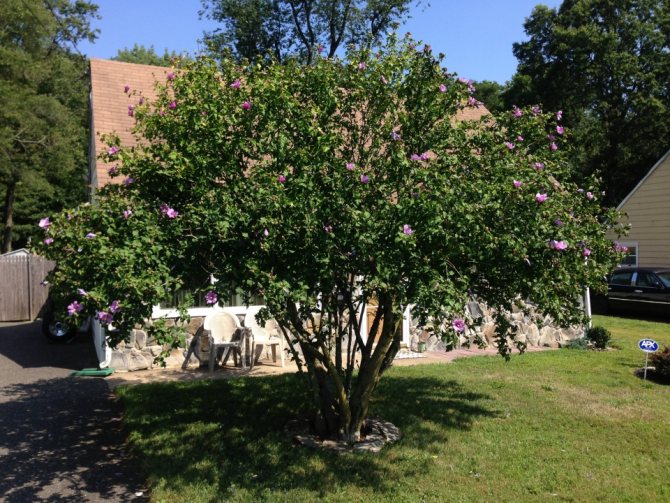

A photo of a plant planted in a local area demonstrates its showiness and beauty. It stands out for its decorativeness and brightness of exotic flowers.
Content
- Listen to the article
- Description
- Planting Hibiscus When to Plant
- How to plant
- Growing
- How to propagate
- Harmful insects and diseases
- Autumn care
- Syrian hibiscus (Hibiscus syriacus)
Application in landscape design
Various flowering hibiscus can be used for planting, both as a single copy and for group plantings. Often the height of the bush does not exceed 1.5 m, which allows it to be used in a shrub or mixed curb.
- Will look great next to evergreen bushes or ground cover samples of a wide variety of plants.
- The Syrian hibiscus variety will be beautifully and unusually combined with a variety of rose varieties. This short bush looks beautiful both in a rose garden and when decorating alpine slides.
- One of the most attractive combinations is planting hibiscus next to lavender. Also, thanks to the aroma emanating from lavender, you can protect your bush from various pests.
- To decorate garden ponds and ponds, as a rule, swamp hibiscus is used. Even if the bush is regularly trimmed, its height can reach about 2.5-3 meters, and its width is from 1 to 1.8 m.Thanks to this, two bushes growing close to each other are able to form a hedge, which allows you to use plants to delineate the site.
- The herbaceous variety is usually planted in groups. He perfectly tolerates pruning, which allows him to adapt for creation unusual bright borders. Since the height of the bushes is quite large, it is best to use such a hibiscus in flower-bed compositions, placing it in the background.
Site and soil selection
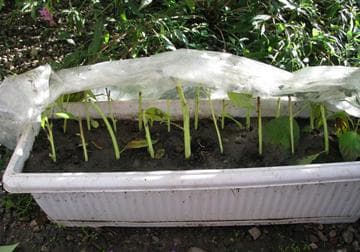

All garden hibiscus grows best in partial shade. In this case, the plant needs about 6 hours of sun per day.
- Choosing the right soil will create favorable conditions for plant growth and development.
- Proper soil should be composed of 5% perlite, 50% peat and 45% hardwood bark.
- For good plant growth, the pH should be between 5.5 and 6.5. This pH range makes the soil slightly acidic.
- The plant thrives best in soil with a high organic matter content.
- Garden hibiscus prefers good soil drainage. The soil should not remain wet for a long time, as this can lead to root rot and slow growth.
Selection of seedlings
It is best to purchase tree hibiscus seedlings in nurseries and specialized stores. The photo shows a wide variety of colors and shapes of flowers of this plant. It is necessary to avoid acquiring hibiscus seedlings from strangers and in spontaneous markets, since otherwise the risk of acquiring low-quality material increases.


It is imperative to take into account the place where the seedlings will be planted, since all varieties differ in their height and shades of flowers. It is important to carefully examine all the shoots and leaves of the seedling. They should be free of signs of illness or injury. When purchasing material with an open root system, it should also be examined for broken and dry roots.
The following are the features of growing tree hibiscus: photo, care, reproduction, etc.
Chemical composition and useful properties
The hibiscus plant contains many organic acids: tartaric, citric, phenolcarboxylic, ascorbic and malic. It contains both flavonoids and amino acids: quercetin, hibiscetin, hibiscetin and myricetin. Hibiscus tea is given a red hue by anthocyanins.
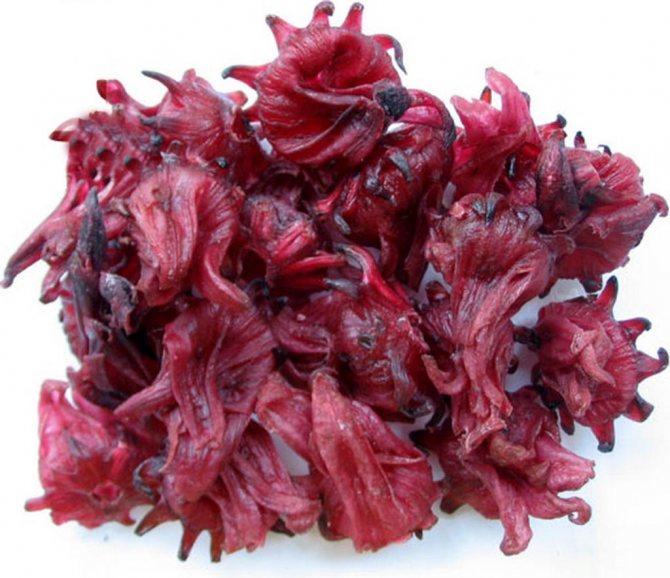

The chemical composition of the plant is represented by polysaccharides, pectin, vitamin C, mucous substances, as well as macro- and microelements.
The main beneficial properties of hibiscus:
- improves skin condition;
- normalizes blood pressure;
- regulates metabolism well;
- has a good choleretic and diuretic effect;
- helps to cleanse the blood;
- strengthens blood vessels;
- has a laxative effect;
- helps to get rid of excess weight;
- strengthens the immune system;
- perfectly cleans the air in the room.
Transplant after purchase in open ground
Most often, garden hibiscus is grown in greenhouses, rock gardens and flower beds. Landscape designers plant seedlings near rose bushes and lavender thickets, enveloping the Chinese rose with the most delicate aroma. A similar smell will scare away pests from the tree plant. Experts recommend planting bush hibiscus near the porch or in central flower beds.
Site selection and lighting recommendations
Chinese rose or indoor hibiscus - home care
Often, inexperienced growers wonder how to plant a hibiscus correctly. Below are tips to make this process easier. When choosing a landing site, preference should be given to well-lit areas that are sheltered from the north wind. It is unacceptable to plant a Chinese rose in a draft.
Important! In shaded areas, the culture will cease to please with lush flowering.
Growing soil
For planting a seedling, you should use fertile soil. The soil should be with drainage, since clay soil provokes moisture retention, which causes rotting of the root system. The growth rate of the flower gradually slows down and the plant dies.
Before you start planting seedlings, you need to dig up the soil and mix it with peat. It is also advisable to add a small part of rotted manure, humus and mineral fertilizers. The soil, well mixed with top dressing, is leveled with a rake and watered. After that, you can start digging depressions for planting young hydrangea bushes.
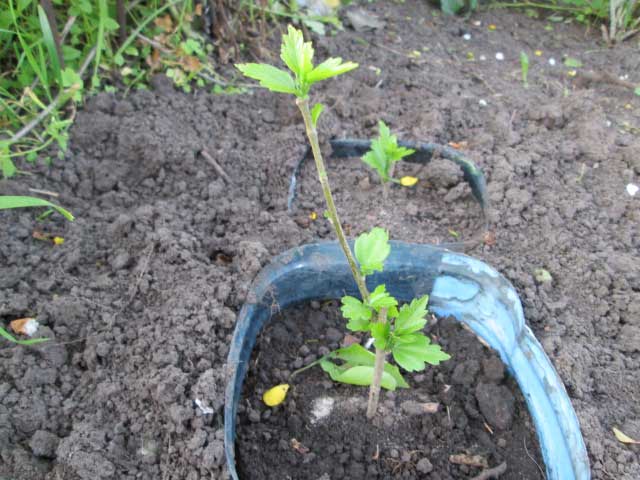

Planting hibiscus
Step-by-step planting process
How to plant hibiscus? Planting and caring for hibiscus garden and marsh process is simple. In order for the seedlings to take root successfully, it is necessary to adhere to the recommendations of specialists when planting:
- After acquisition, it is unacceptable to water the seedling. Keep the soil in the container dry.
- You need to dig a depression in the chosen place and place a small part of humus in it or fill the surface of the bottom of the pit with saltpeter (10-15 g). Top dressing is mixed with the soil.
- The container in which the root system of the seedling is located is tapped on the walls so that the root ball of earth can easily come out of the pot.
- Tilting the container, carefully pull out the root system of the seedling along with the soil and move it into the prepared hole.
- After installing the hibiscus in the planting recess, the unfilled side void of the pit is covered with soil.
- Water the planted Chinese rose liberally. Pour 10-12 liters of water under each hibiscus bush.
When planting seedlings, it is worth choosing spacious areas in the flower beds so that it is possible to conveniently care for the bushes. Adult tree-like plants occupy large areas, since the volume of hibiscus often reaches 70-80 cm.When planting several bushes at the same time, it is worth leaving a distance between the planting holes of at least 150-200 cm.
It is very important to establish a support near the plant. The herbal shrub will be able to tie to it as it grows. If you ignore this advice, then the flowers will be picked off by the first strong wind or downpour.
Don't forget about cropping
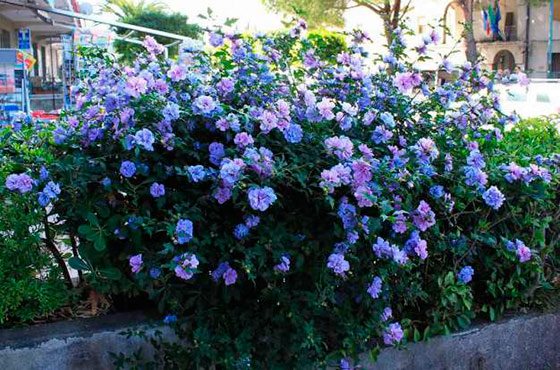

The plant needs annual spring pruning. Only new shoots are left on the crown, and the old ones are removed. Otherwise, there will be few flowers on the bush, since they appear only on young branches. How to shape a hibiscus into a tree? Cut off last year's branches by a quarter, otherwise the crown will grow shapeless.
Gardeners distinguish between several types of pruning:
- spring (stimulates growth);
- thinning (removal of old stems);
- corrective (giving the crown the desired shape, adjusting the height of the bush);
- autumn;
- Pruning for survival when a minimum number of short stems are left above the ground.
Propagation by cuttings
Semi-lignified green cuttings of treelike hibiscus (about 17 cm) are best cut in summer. They need to be cut off below the leaf node, and the leaves located below should be cut off. Dip the cuttings into a root former, then dip them into a mixture of perlite and peat (1: 2), and then pour and cover with a transparent bag.
Rooting usually takes about 30 days when the air temperature in the greenhouse is 21-23 ° C. The soil should always be kept moderately moist and the bag should be removed periodically for ventilation.

